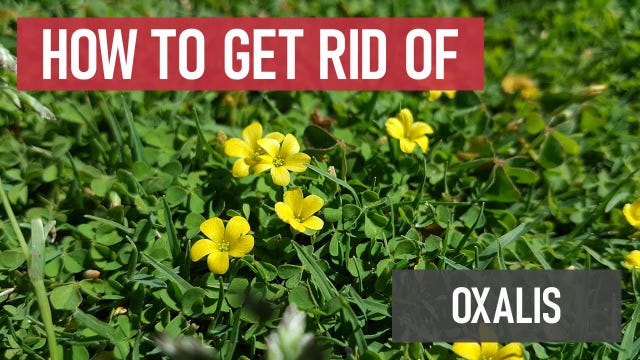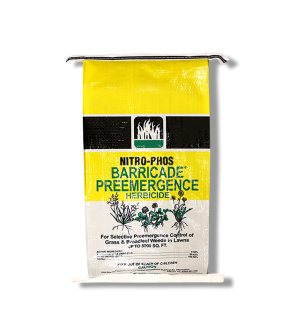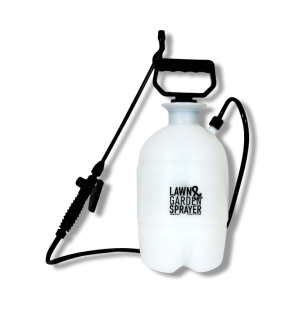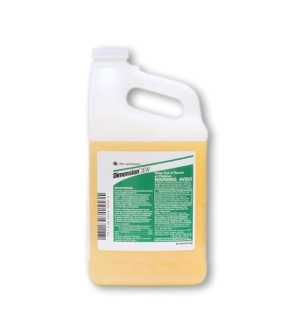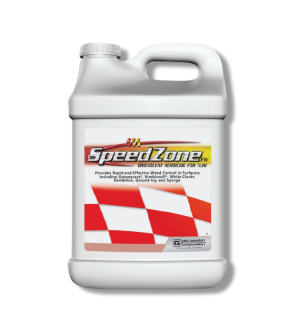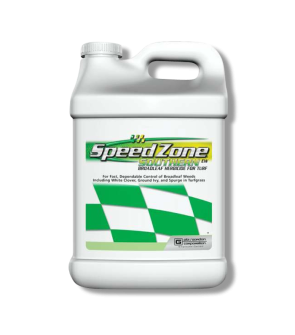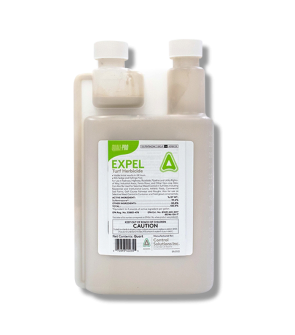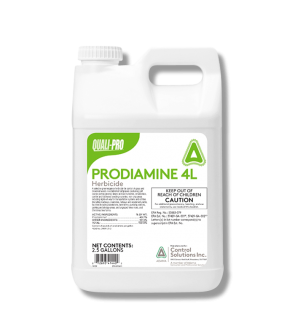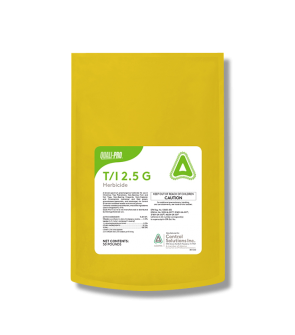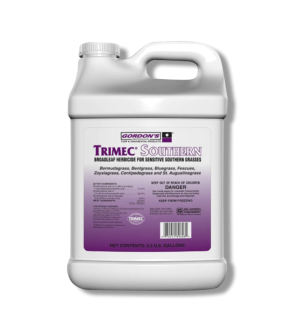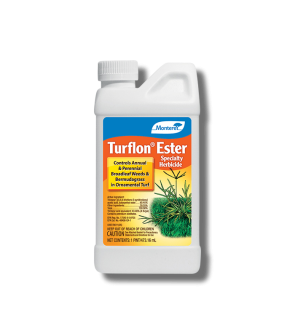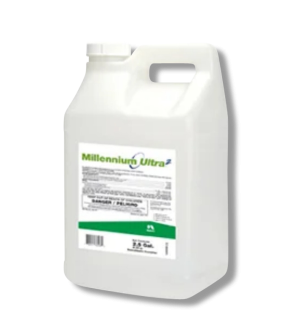Gain access to personalized product screening, the best pricing, rewards, and more!
Most Effective Products
Oxalis Control: How To Get Rid of Oxalis
This page is a general oxalis control guide. Using the products and methods suggested, you will get control of oxalis. Follow this guide and use the recommended products; we guarantee 100% oxalis control.
Oxalis is an annual and perennial plant that some people find pleasant to look at because of its delicate clover-like leaves and attractive blooms. However, oxalis weeds can be one of the most annoying and difficult to eradicate.
Oxalis is a perpetual weedy groundcover that spreads via interlocking underground stems (or rhizomes) that are easy to separate. This weed has many seeds that drop when ready from little seed cases that look similar to okra. Anywhere the oxalis weed stem touches the ground, the plant can root, potentially spreading the weed infestation.
This noxious weed usually dominates garden areas planted with low ground covers. When oxalis grows alongside ground covers, it is virtually impossible to get rid of it without damaging the desired grass surrounding it. Managing oxalis can be difficult because of its tough root system and the plant's different methods of reproduction and persistence.
If you have a problem with oxalis weed on your lawn, our DIY oxalis treatment guide can help. Our lawn care experts recommend the directions below and will show you how to remove oxalis properly from your yard or garden.
Identification
Before proceeding with a treatment program, you will need to be certain that you are dealing with an oxalis infestation. Careless identification can lead to using the wrong treatment methods, which can be a waste of time and money. Below are the following characteristics to help you understand what oxalis looks like.

- Oxalis, also known as wood sorrel, looks very similar to clover before it flowers. Its signature trifoliate leaves mean it grows within groups of threes. The difference between these weeds is that oxalis have smoothed-edged heart-shaped leaves, whereas clover leaves are more rounded.
- Oxalis can grow between 6 and 12 inches tall. The stems are slightly hairy, branch from the plant’s base, and grow upright. The leaves are green, but another oxalis species, creeping woodsorrel, has green to purple leaves.
- When either of these oxalis species flower, yellow woodsorrel or creeping woodsorrel, they produce single flowers or clusters of flowers. These flowers have 5 yellow petals. The seedpods are shaped like okra and can launch seeds long distances.
Use the description and image above to help you properly identify oxalis weed on your property. If you are not totally sure, contact us and send us a photo of your weed. We will assist you with oxalis weed identification and suggest treatment options.
Inspection
Once you have confirmed that you are dealing with oxalis weed, you can perform an inspection. During this phase, you will need to locate the areas where oxalis is growing and observe the conditions that may be helping this weed to thrive.

Where to Inspect
Oxalis grows well in moist, fertile soil in areas that see full sunlight but can also tolerate partial sunlight.
Common sites for growing oxalis are vegetable gardens, ornamental gardens, and lawns.
What to Look For
Oxalis germinates in spring and will start producing flowers and seed pods from late spring through summer.
Oxalis weeds on your property are easily noticed due to their shamrock-like leaves and, if mature, bright flowers. They are often seen forming thick clusters of groundcover.
Treatment
Before carrying out oxalis control methods, please ensure you have the necessary personal protective equipment (PPE) (gloves, mask, glasses) before handling herbicide chemicals.
If oxalis is appearing on your lawn, apply Expel Turf Herbicide. Expel Turf Herbicide is our go-to oxalis weed killer because it is affordable, easy to use, and labeled for both warm-seasoned and cool-seasoned turf.
Apply Exepl Turf Herbicide in the late spring when the weeds are younger and smaller. Herbicides are less effective the older and more mature the weed becomes.
Step 1: Mix and Apply Expel Turf Herbicide
Determine how much Expel Turf Herbicide to use by measuring the square footage of the treatment area. To do this, measure the length and width of the treatment area in feet, then multiply them together (length X width = square footage). For acreage, divide the square footage by one acre (square footage / 43,560 sq. ft. = acres).
To get rid of oxalis in warm-seasoned turf, use 8 to 12 oz. of Expel Turf Herbicide per 10 gallons of water per acre.
To get rid of oxalis in cool-seasoned turf, apply 4 to 8 oz. of product per 10 gallons of water per acre.
Due to this product’s high-volume applications, high-capacity equipment like a spray rig may be necessary.
To mix, fill the tank with half the water, add a measured amount of Expel Turf Herbicide, and pour in the remaining half of the water. Shake the tank until the solution is well-mixed.
Step 2: Apply the Expel Turf Herbicide To The Oxalis Weeds
Once Expel Turf Herbicide is thoroughly mixed, broadcast your solution evenly over the area.
In some cases, you may have to repeat the application after 35 days from the previous application until the weed dies out.
The maximum annual application rate is 8 fl. oz. on cool-season grasses and 12 fl. oz. on warm-season grasses.
If you treat oxalis in ground cover, check the product’s label to ensure your ground cover plant is resistant. Otherwise, this application will injure the targeted weed and ground cover species.
Prevention
Once oxalis has been eliminated from your property, you must implement some preventative measures to ensure that this weed does not return. Here are some preventative measures we suggest taking to keep oxalis away:
- A pre-emergent like Barricade Pre-Emergent Herbicide Prodiamine Granular is the best preventative measure, especially if the oxalis is an annual occurrence. Barricade Granular Pre-Emergent Herbicide will form a chemical barrier in your soil, preventing weed seeds from sprouting and emerging. Depending on your turf species, you may use from 1.5 to 4 pounds of product per 1,000 sq. ft. Adjust your spreader to the proper setting, then load the needed product. Spread the granules across the treatment area in 2 perpendicular passes, carefully avoiding overlap. After application, water the granules with 0.5 inches of irrigation to activate them. Remember that this application will only prevent new oxalis from growing from seed, not by rhizome.
- Keep up with regular lawn fertilization, as thick plant growth will help to choke out oxalis infestations. We recommend using Solutions 15-5-10 Weed & Feed Fertilizer with Trimec, which will supply your lawn with the proper nutrients and help to remove emerged oxalis weeds. For most applications, you must apply 3.2 to 4.0 pounds of product per 1,000 square feet of treatment area. Spread the product granules evenly across the treatment area with a push or broadcast spreader. Wait until 1 to 2 days after application, then water the granules in.
- Maintain overall cultural practices such as watering with an inch of irrigation once weekly to avoid overwatering and mowing when the turf has reached 3 inches in height.
Key Takeaways
What is Oxalis?
- Oxalis is a fast-growing annual weed known for its tendency to take over lawns and gardens with its low-growing ground cover.
How To Get Rid of Oxalis
- Our top recommendation for killing oxalis is Expel Turf Herbicide.
Preventing Oxalis Re-emergence
- A pre-emergent herbicide like barricade can be applied to your lawn before the growing season to prevent oxalis seeds from sprouting.






